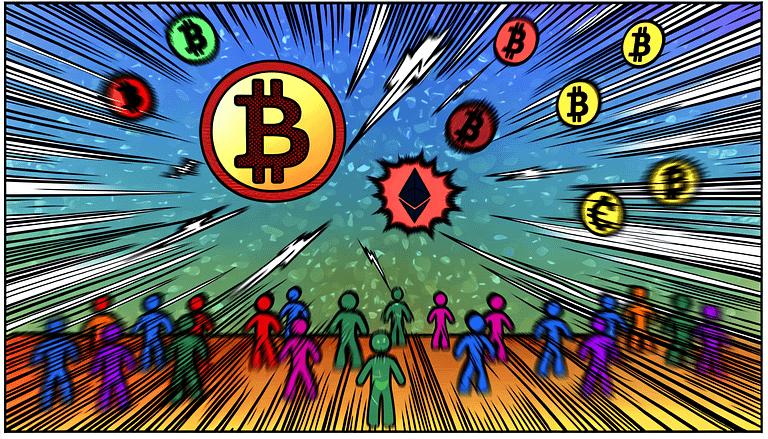Solana vs. Ethereum: The Scalability-Decentralization Duel
In A Nutshell
The ongoing debate between Solana and Ethereum surfaces anew as the ‘Small blocker argument’ reignites, questioning Ethereum’s scalability and architecture amidst a bearish market. With Ethereum and Bitcoin experiencing notable declines, the focus shifts towards the underlying blockchain technologies and their scalability solutions. While Solana pushes for L1 scalability, Ethereum remains steadfast in its commitment to L1 decentralization, sparking discussions on the sustainability and future of these platforms.
Scalability vs. Decentralization: The Core Debate
Ethereum’s architecture has been under scrutiny, with critiques pointing towards its scalability. David Hoffman from Bankless draws parallels between the historical Bitcoin block size wars and the current scenario, categorizing Solana as a ‘big blocker’ advocating for L1 scalability, and Ethereum as a ‘small blocker’ focusing on L1 decentralization and L2 scaling solutions. This debate underscores the evolving landscape of blockchain technology, where the balance between scalability and decentralization remains a hot topic.
The Importance of Block Complexity
The discussion extends into the realm of block complexity, with Hoffman emphasizing the significance of a fully expressive virtual machine, which Ethereum introduced to the blockchain ecosystem. Vitalik Buterin, Ethereum’s co-founder, has also weighed in, arguing that keeping L1 simple and compensating on L2 is not a one-size-fits-all solution for blockchain scalability and functionality. This stance highlights the challenges in achieving a harmonious balance that can cater to both high functionality and true decentralization.
Is Ethereum Too Expensive?
The affordability of Ethereum has been a concern, with some arguing that it has become less accessible for individual users and more geared towards larger entities like chains and exchanges. Critics like @RyanSAdams counter this viewpoint, suggesting that Ethereum’s cost reflects its value and utility. Furthermore, comparisons between Ethereum L2 solutions and the Cosmos chains shed light on the diverse approaches to blockchain interoperability and sovereignty.
Layer 2 Security Concerns
Recent allegations regarding the potential mishandling of user funds by top Layer 2 solutions have cast a shadow over Ethereum’s commitment to decentralization. This has fueled the debate on whether Ethereum’s architecture and its prioritization of scalability solutions compromise its foundational principle of decentralization, as pointed out by critics like Justin Bons.
Our take
The resurgence of the ‘Small blocker vs. Big blocker’ argument within the context of Solana and Ethereum reveals deeper questions about the future direction of blockchain technology. While both scalability and decentralization are critical for the success and adoption of blockchains, finding the right balance is paramount. Ethereum’s approach, emphasizing L2 solutions while preserving L1 decentralization, suggests a long-term vision that may not provide immediate solutions but aims for sustainable growth and innovation. As the blockchain ecosystem continues to evolve, it’s clear that debates like these will shape its path forward, influencing both current platforms and those yet to be developed.
Sources
– AMBCrypto







